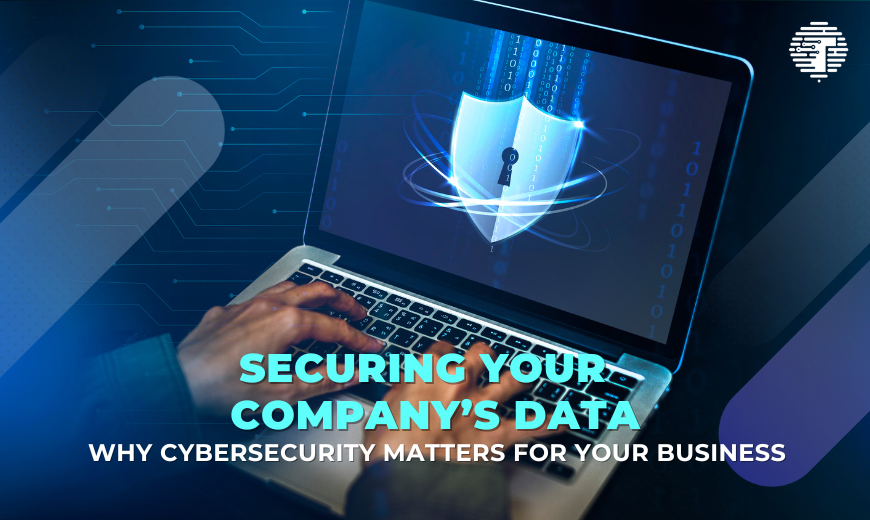Introduction of Cybersecurity Situation
As COVID-19 reshaped our digital landscape and how people use technology, the spotlight intensified on the crucial role of cybersecurity. Cybercriminals set their sights on higher value targets, shifting from everyday users and local businesses to major corporations, government, and vital infrastructure.
Since 2020, there has been a staggering 600% rise in cyberattacks. By 2025, global cyber attack costs are projected to skyrocket to a whopping $10.5 trillion annually. Given these trends, a significant uptick in cybersecurity measures is not just probable—it’s imminent.
This article aims to highlight why organisations need to take cybersecurity seriously and implement strategies to safeguard your employee, customer and other sensitive data and protect against the ever-evolving landscape of cyber threats.
The Big 5: Most Common Cybersecurity Threats Today
Cyber attacks are on the rise, and they target a wide range of victims from individuals users to enterprises or even governments.
Let’s dive into the top 5 common types of these digital intrusions.
1. Ransomware
There are many types of malware and ransomware has recently emerged as the most popular in the world of cybercrime.
Ransomware is a type of malicious software that locks and encrypts a victim’s file, then demands payment for the decryption and release.
Think of it like a digital kidnapper; it sneaks in, locks up your files, and demands a payment for their safe return.
Over 72% of businesses globally fell victim to ransomware attacks in 2023. Ransomware attacks accounted for 12% of critical infrastructure breaches.
2. Phishing
Did you know that every 11 seconds, a cyberattack like ransomware or phishing strikes?
Phishing attack occurs when an attacker sends malicious emails appearing as trusted sources to capture sensitive data. These attacks use social engineering and technology, likened to “fishing” with deceptive “bait.”
Their aim? To capture your sensitive data or trick you into downloading malware.
Often, victims remain unaware, letting the attacker continue undetected.
Nearly 1.2% of all emails, or 3.4 billion daily, are malicious phishing attempts. By 2023, over 33 million records will be at risk.
3. Man-in-the-middle attack (MITM)
Cofense Intelligence reported a 35% rise in man-in-the-middle (MITM) attacks from Q1 2022 to Q1 2023.
Man-in-the-middle attacks are a sophisticated cybersecurity threat where attackers secretly intercepts and modifies the communications between two parties to either steal data or plant malicious content.
Often, these attackers “sniff” data packets to capture unencrypted information like passwords. And once they’ve got the infomation, they can hijack devices, impersonate the user, drain financial assets, or modify login credentials.
Typically, targets are users on financial sites, e-commerce platforms, and business networks.
4. Distributed denial-of-service (DDos)
DDoS attack, short for “Distributed denial-of-service”, is a malicious attempt to disturb a server or system with a flood of internet traffic, making online services or websites inaccessible for users.
To do this, hackers use multiple hacked computers, known as a ‘botnet’, to send massive traffic to their chosen target.
Over the next few years DDoS attacks have become common and the number of DDoS attacks will double from 7.9 million in 2028 to over 15 million by 2023.
Tech giants like Google, AWS, and GitHub, have fallen victim to DDoS attacks. Also, common targets are business websites, online gaming servers, and government platforms.
These attacks can be dramatic when they target critical infrastructure, causing significant societal disruption.
5. SQL injection
Last but not least, SQL injection is one of the most critical vulnerabilities in web applications.
It is a type of cyberattack that targets databases through applications where hackers will insert or ‘inject’ harmful SQL code into an application’s data.
Through this method, attackers can bypass traditional authentication protocols and gain unanthrosied accesses to a website’s core databases.
This not only allows them to retrieve sensitive data but also to modify or delete records.
Therefore, to ensure website safety, developers must guard against SQL injection through strong security measures.
3 Case Studies of Cybersecurity in History
Here is a list of the 5 biggest data breaches in recent history, including details of those affected, who was responsible for, and how the companies responded.
1. Cyber Attack on Yahoo – 2014
The Yahoo cyber attack in 2014 is one of the largest data breaches, initially reported to affect 500 million users.
In September 2016, Yahoo officially confirmed that a major breach of their system had taken place in late 2014.
This breach had a direct financial consequence for Yahoo.
After the revelations about the data breach, Verizon reduced its purchase price for Yahoo by $350 million, ultimately paying $4.48 billion. And they reported that the final number of records about 3 billion accounts affected.
The day following the attack, Yahoo’s stock value fell 3%, resulting in a $1.3 billion loss in market capitalisation.
2. Marriott Data Breach – 2014
The Marriott International data breach is another significant event in the history of cyber attacks.
In November 2018, the hotel revealed the breach of its Starwood database, discovered in September, with unauthorised access dating back to 2014. This cyber intrusion jeopardised the data of up to impacting up to 339 million guests.
But there is more to this digital heist.
Beyond the genetal guest data, Marriott Marriott feared that the hackers might have also accessed the encryption keys to decode credit card numbers.
In response, the UK’s data privacy authority imposed an £18.4m fine against Marriott Hotel for the extensive breach.
3. A Massive Facebook Breach in 2021
Despite being a global giant, Facebook has endured several significant data breaches since 2013.
In April 2021, one of its largest breaches exposed over 530 million Facebook’s users’ data. The extent of this breach became clear when a forum user published the compromised personal information.
Facebook attributed this lapse to a flaw in an earlier version of their platform. While the company assured that the data had not been misused, it’s hard to be sure since the information was briefly public.
For those affected by the breach, updating passwords is crucial. Additionally, Facebook urges users to fortify their accounts by enabling two-factor authentication.
6 Best Practices for Improving Business Cybersecurity
1. Educate your employees
Statista’s data reveals that 60% of cyber vulnerabilities stem from human error, like engaging with harmful links or obtaining questionable attachments, can compromise security.
Thus, regularly conduct security awareness training sessions for your employees. Teach employees how to recognise phishing emails, the importance of not sharing sensitive information, and the risks of using unsecured networks.
2. Implement safe password practices
30% of online users have had breaches due to poor passwords. Enforce policies that require strong and unique passwords (a mix of letters, numbers, and symbols) and employ two factor authentication. Also encourage regularly updated passwords by setting reminders for employees to change their passwords every 60-90 days.
3. Choose the right partners and platform for cybersecurity
The challenge of dealing with cybercrime is complex. Working with partners and platforms that prioritise security can reinforce your defenses. Vet your partners’ and vendors’ security protocols. Ensure that software and platforms you use are reputable, regularly updated, and recognised for their security features.
4. Secure your hardware
Physical theft can also lead to data breaches. Limit hardware access to key staff, secure with cameras and locks, and encrypt mobile devices with remote wipe features.
5. Regularly backup all data
Ransomware can lock data, demanding payment. Consistently back up your data on-site and in the cloud. Encrypt backups and test occasionally for data accuracy and effective restoration.
6. Regular software updates and patch management
Quickly patching vulnerabilities can prevent many attacks. Ensure that all software, from operating systems to applications, is regularly updated to guard against known threats.
Conclusion of the Cybersecurity
In the digital age, cybersecurity is more than just a tech buzzword—it’s an essential business practice. The aftermath of COVID-19 has shown us the lengths to which cyber adversaries will go. While tech advancements open new doors of opportunities, they also usher in potential vulnerabilities.
Now, imagine a world where businesses thrive, unhindered by cyber threats. Investing in strong cyber defenses today is a significant step in that direction. Because, let’s face it: a business’s strength isn’t just in its profits, but also in its protection.





